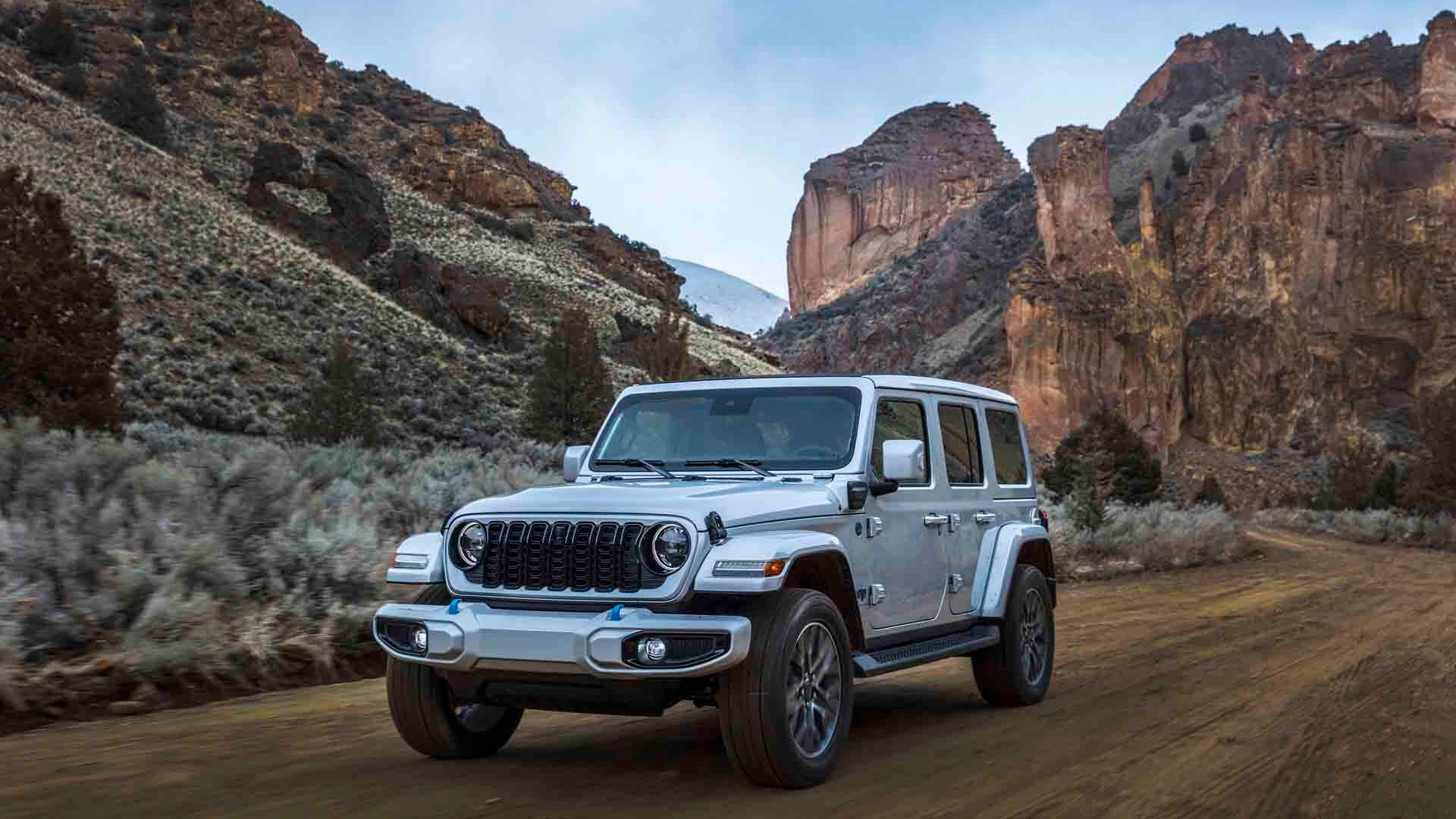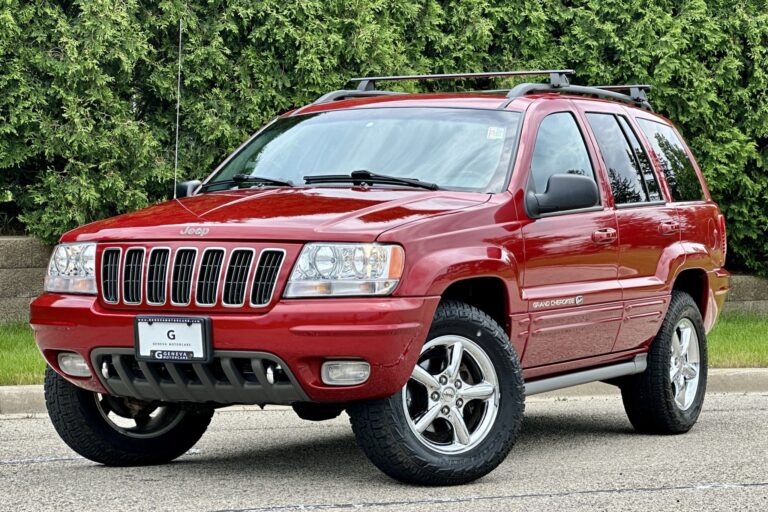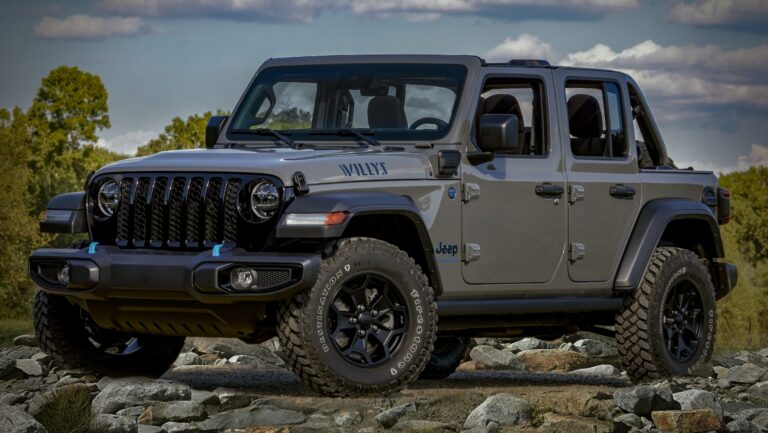Jeep Wrangler 5 Speed: Embracing the Analog Off-Road Adventure
Jeep Wrangler 5 Speed: Embracing the Analog Off-Road Adventure jeeps.truckstrend.com
In an increasingly automated world, where transmissions boast more gears than you can count and vehicles practically drive themselves, there remains a passionate cohort of enthusiasts who cling to the tactile thrill of a manual gearbox. For Jeep Wrangler aficionados, this often translates to a deep appreciation for the Jeep Wrangler 5 Speed – a vehicle that embodies direct driver engagement, unparalleled control, and a connection to the road (or trail) that modern automatics simply can’t replicate.
The term "Jeep Wrangler 5 Speed" refers specifically to Wrangler models equipped with a five-speed manual transmission. While modern Wranglers have moved to six-speed manuals or sophisticated automatics, the 5-speed was a staple for many years across popular generations like the YJ, TJ, and early JK models. It’s more than just a gear count; it’s a statement of intent, a preference for raw capability over convenience, and a nod to the Wrangler’s rugged, utilitarian heritage. For those who seek the ultimate control over their vehicle’s power delivery, especially when navigating challenging off-road terrain, the 5-speed manual Wrangler remains a cherished icon.
Jeep Wrangler 5 Speed: Embracing the Analog Off-Road Adventure
The Enduring Appeal of the 5-Speed Manual Wrangler
Why does the 5-speed manual Wrangler continue to captivate? The answer lies in its fundamental advantages, particularly for the purist and the serious off-roader:
- Direct Control and Engagement: A manual transmission provides an intimate connection between driver and machine. You choose the gear, you modulate the clutch, and you feel the engine’s power directly translate to the wheels. This level of control is invaluable, whether you’re managing traction on slick rocks or maintaining momentum through mud.
- Off-Road Prowess: For technical off-roading, the manual transmission shines. The ability to "feather" the clutch allows for incredibly precise, low-speed maneuvers over obstacles, avoiding sudden lurches. Engine braking on steep descents is superior, as the driver can select a lower gear to slow the vehicle without over-relying on the brakes, preventing fade and maintaining control.
- Simplicity and Reliability (Historically): While modern automatics are robust, older automatic transmissions sometimes presented more complexity and potential failure points compared to their manual counterparts. The relative simplicity of a manual gearbox, particularly the sturdy units found in Wranglers, contributed to a reputation for reliability, provided they were maintained correctly.
- The "Fun Factor": For many, driving a manual is simply more engaging and enjoyable. The rhythmic shifting, the perfectly executed rev-match, and the feeling of truly commanding your vehicle add a layer of satisfaction that an automatic can’t offer. It transforms a commute or an off-road excursion into an interactive experience.
![]()
Generations and Transmissions: A Brief History
The 5-speed manual has been a cornerstone of the Wrangler lineage, evolving with each generation:
- YJ (1987-1995): The first Wrangler generation primarily utilized the Aisin AX-5 (for 4-cylinder engines) and the more robust Aisin AX-15 (for the 4.0L inline-six). Both were 5-speed units known for their durability, though the AX-5 could be less forgiving under hard use or with larger tires.
- TJ (1997-2006): The TJ continued with the AX-5 and AX-15 in early models. Later, the 4.0L engine gained the New Venture Gear NV3550 (1999-2004), a highly regarded 5-speed known for its strength and smooth shifting. From 2005-2006, the Mercedes-Benz NSG370 6-speed manual was introduced, effectively phasing out the 5-speed in new models, though many still identify these years as "transitional" with a manual option.
- JK (2007-2018): While the JK is best known for its 6-speed manual (the NSG370 carried over), early models, particularly those with the 3.8L V6 engine, did technically offer a 5-speed manual in certain international markets or specific configurations, though it was far less common in North America compared to the 6-speed or automatic. For the purpose of common understanding, the "Jeep Wrangler 5 Speed" mostly refers to YJ and TJ models.

Each transmission had its own characteristics, but they all offered that essential 5-speed manual experience, connecting the driver directly to the legendary Jeep drivetrain.
Driving the 5-Speed Wrangler: On-Road and Off-Road Dynamics
Driving a 5-speed manual Wrangler is a unique experience, with distinct considerations for both daily driving and extreme off-roading.
On-Road:
- Learning Curve: For those new to manuals, the Wrangler’s clutch can feel a bit heavy, and the throws long, requiring some practice. However, once mastered, it becomes second nature.
- Traffic: Stop-and-go traffic can be tedious, requiring constant clutch and shifter work, which can lead to driver fatigue.
- Highway Performance: Depending on the specific transmission and axle gearing, a 5-speed Wrangler might run at higher RPMs on the highway compared to a 6-speed or modern automatic, impacting fuel economy and noise levels. Re-gearing axles is a common modification for Wranglers with larger tires to bring RPMs back into an efficient range.
Off-Road:
- Crawl Control: This is where the 5-speed truly shines. In low range (4L), the ability to slowly feed power via the clutch allows for precise movement over obstacles, crucial for rock crawling and technical trails.
- Engine Braking: On steep descents, engaging a low gear allows the engine to naturally slow the vehicle, reducing the need to ride the brakes and preventing heat buildup and fade.
- Feathering: The art of modulating the clutch to maintain momentum without spinning tires or stalling is perfected with a manual.
- Challenges: Stalling on steep ascents or in difficult situations can be a concern, especially for less experienced manual drivers. Abusing the clutch (e.g., slipping it excessively to gain traction) can lead to premature wear and overheating.
Maintenance and Longevity of Your 5-Speed Transmission
Like any mechanical component, the 5-speed manual transmission requires proper care to ensure its longevity.
- Fluid Changes: This is paramount. The type of fluid is specific to the transmission (e.g., AX-15 uses GL-3/GL-4 gear oil, NV3550 uses syncromesh fluid, NSG370 uses specific manual transmission fluid). Consult your owner’s manual or a trusted mechanic. Regular fluid changes (typically every 30,000-60,000 miles, or more frequently with heavy off-road use) prevent wear and ensure smooth operation.
- Clutch System: The clutch is a wear item. Its lifespan depends heavily on driving habits (avoiding riding the clutch, proper shifting) and vehicle modifications (larger tires, heavy loads).
- Components: The clutch assembly includes the clutch disc, pressure plate, throw-out bearing, and pilot bearing. When replacing the clutch, it’s highly recommended to replace all these components simultaneously.
- Symptoms of Wear: Slipping (engine RPMs rise but vehicle speed doesn’t increase proportionally), difficulty shifting, chattering, or a burning smell.
- Common Issues: While generally robust, specific transmissions can have known quirks. For instance, older AX-5/AX-15 units might develop worn syncros leading to grinding, especially when shifting into lower gears. NV3550 and NSG370 are generally very strong but still require proper fluid and care. Addressing minor issues promptly can prevent major repairs.
Modifications and Upgrades for 5-Speed Wranglers
Enthusiasts often modify their Wranglers, and the 5-speed manual system isn’t immune to upgrades:
- Clutch Upgrades: For Wranglers running larger tires or higher horsepower engines, a heavy-duty clutch kit can provide increased clamping force and durability.
- Shifter Upgrades: Aftermarket shifters (e.g., short throw shifters) can reduce throw length for quicker, more precise shifts. Heavier shift knobs can also improve feel.
- Axle Re-Gearing: This is perhaps the most crucial modification for 5-speed Wranglers with larger tires. Changing the differential gears (e.g., from 3.73 to 4.56 or 4.88) restores the effective gear ratio, bringing engine RPMs back into the power band, improving acceleration, fuel economy, and reducing strain on the transmission and clutch, especially in top gear.
- Transfer Case Upgrades: Lower ratio transfer case gears (e.g., 4:1) can further enhance the crawl ratio, making the 5-speed even more capable in extreme rock crawling without excessive clutch slipping.
Is a 5-Speed Manual Wrangler Right for You? Pros and Cons
Deciding on a 5-speed manual Wrangler involves weighing its unique characteristics against your driving style and needs.
Pros:
- Unmatched Control: Especially beneficial for technical off-roading.
- Engaging Driving Experience: Makes every drive more interactive.
- Often Lower Initial Cost: Used manual Wranglers can sometimes be found at a lower price point than automatics of the same vintage.
- Simplicity and Reliability: Fewer complex electronic components than modern automatics.
- The "Purist" Appeal: Connects you to the classic Jeep experience.
Cons:
- Learning Curve: Can be challenging for new manual drivers.
- Fatigue in Traffic: Constant clutching and shifting can be tiring.
- Clutch Wear: A wear item that will eventually need replacement, especially with aggressive off-roading or improper technique.
- Less Common in Newer Models: Limits options for those seeking a brand-new vehicle.
- Resale Value: Can be a niche market; some buyers prefer automatics.
Practical Advice and Actionable Insights
For prospective buyers, always test drive a 5-speed Wrangler thoroughly. Pay attention to the clutch engagement point, listen for any grinding noises during shifts, and ensure the shifter feels solid. For current owners, prioritize regular transmission fluid changes with the correct fluid type. Learn proper off-road manual techniques, such as using low range effectively to minimize clutch slipping and maximizing engine braking on descents. Embrace the manual experience; it’s a skill that pays dividends in control and enjoyment.
Pricing Guide: Jeep Wrangler 5-Speed (Used Market Estimates)
As the "Jeep Wrangler 5 Speed" refers to a transmission option across various generations and trims, there isn’t a single fixed price. The values are entirely dependent on the used market, varying wildly based on year, condition, mileage, trim level (Sport, Sahara, Rubicon), and modifications. The following table provides rough estimates for well-maintained, stock-ish examples.
| Generation | Common 5-Speed Years | Engine Options (Common) | Estimated Price Range (Good Condition) | Estimated Price Range (Excellent Condition/Rubicon) | Notes on Price Factors |
|---|





